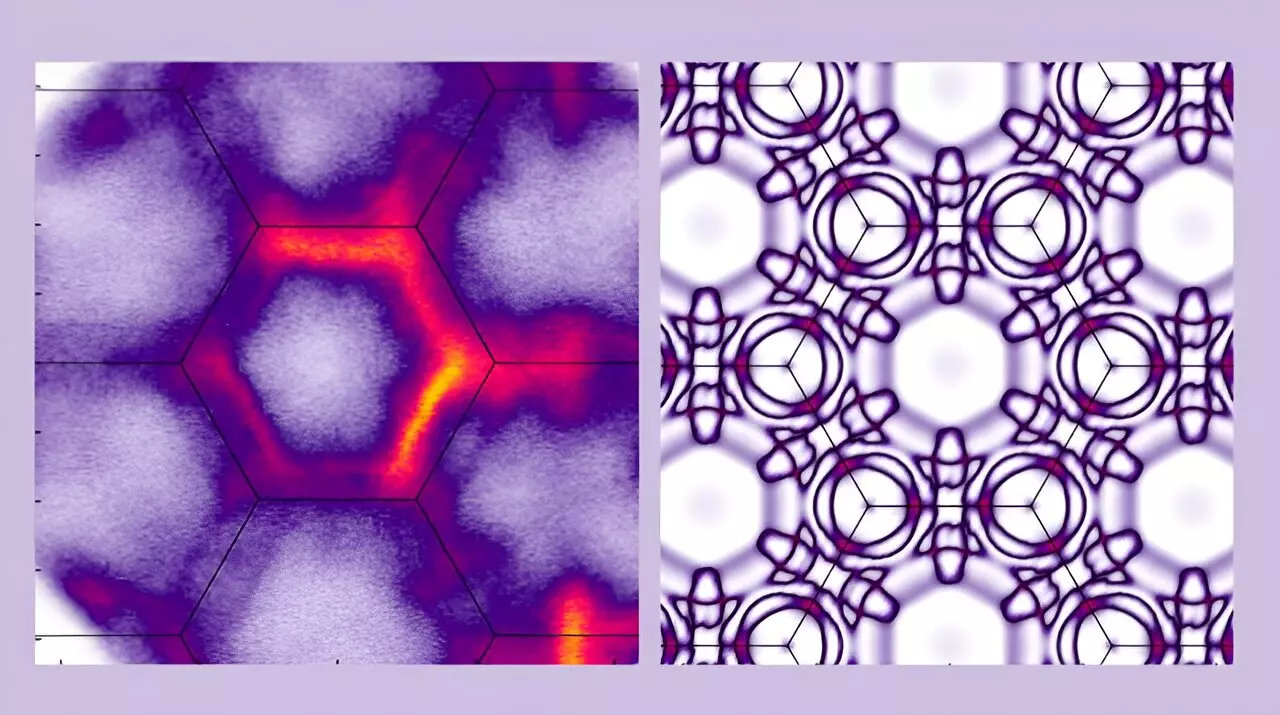Quantum systems research is pushing boundaries in the development of programmable quantum devices. The Quantum Systems Accelerator (QSA) is at the forefront of this endeavor. Collaborating with Lawrence Berkeley National Laboratory (Berkeley Lab), the University of California, Berkeley (UC Berkeley), and Los Alamos National Laboratory, QSA scientists conducted a groundbreaking series of experiments utilizing a new type of layered 2D metal. The research focused on investigating the electronic behavior of this material to identify potential connections that could facilitate the fabrication of advanced superconducting quantum processors. The results of this study were published in Physical Review B in December 2022, shedding light on the search for novel superconducting 2D materials that can overcome existing fabrication and materials challenges.
Transition metal dichalcogenides (TMDs) are unique exotic metals that can be fabricated into thin layers with well-defined crystalline structures. These properties make them excellent candidates for experimentation and device fabrication. The interaction of electrons in TMDs leads to fascinating physical phenomena, such as superconductivity and itinerant magnetism. Superconductivity allows the flow of electrical charge through a metal with minimal resistance, while itinerant magnetism involves the transfer of magnetism between atoms rather than localization to a fixed position.
In most cases, materials either exhibit superconductivity or magnetism, but not both. However, the presence of itinerant magnetism is often indicative of a material’s potential as a superconductor. The crystalline structure of a TMD with strong magnetic properties becomes a promising starting point for the search for new superconductors. Despite this knowledge, the interplay between itinerant magnetism and superconductivity in TMDs has not been fully understood.
NiTa4Se8 belongs to an emerging class of intercalated TMDs that possess strongly correlated electrons. The presence of a ferromagnetic layer enhances the interaction and correlation between electrons. QSA researchers engaged in a series of experiments to characterize the electronic conduction properties of NiTa4Se8, aiming to observe both itinerant magnetism and superconductivity. Manipulating the configuration of atoms and electrons in the layered crystalline metal through chemical processing and techniques enabled a comprehensive study of electron behavior.
Understanding the internal symmetries of a material is crucial for studying its superconductivity and itinerant magnetism. By manipulating the symmetry configurations in NiTa4Se8, the researchers gained insights into the behavior of electrons in the material. This knowledge is instrumental in guiding the development and fabrication of superconducting quantum technologies.
Cutting-Edge Photoelectron Spectroscopy
To facilitate their research, the team took advantage of Berkeley Lab’s state-of-the-art photoelectron spectroscopy capabilities at the Advanced Light Source (ALS). This technique utilizes photons to interact with electrons, allowing for rapid characterization of 2D materials and surfaces. Techniques like Angle-Resolved Photoemission Spectroscopy (ARPES) and Energy-dispersive X-ray spectroscopy (EDS or EDX) provided valuable information about the NiTa4Se8 material. Powder X-ray diffraction enabled the simulation, characterization, and study of the complex crystalline structure at a microscopic scale.
Eli Rotenberg, a staff scientist at the ALS and a QSA researcher, conducted precise measurements of electron behavior and the Fermi surface. The Fermi surface plays a crucial role in condensed matter physics for superconductivity. Electrons near the surface participate in electrical conduction, leading to interesting physics at the interface between occupied and unoccupied states. Rotenberg’s work shed light on the unique physical properties of quantum materials and their potential for diverse applications.
The study of novel materials for building advanced quantum devices presents numerous challenges. The complexities inherent in these materials and the variety of measurements required demand cutting-edge instrumentation and tools. Researchers must adapt techniques to specific systems, considering the ever-evolving nature of materials and the emergence of defects during device fabrication. Nevertheless, the QSA and its collaborative teams are dedicated to pushing the boundaries of quantum research and bridging the gap between imperfect hardware systems and transformative quantum technologies.
The study of NiTa4Se8 and other magnetic TMDs has paved the way for further exploration of correlated itinerant magnetism and unconventional superconductivity in 2D materials. By gaining a better understanding of the fundamental aspects of these materials, researchers can refine the development of increasingly sophisticated quantum processors. The QSA’s interdisciplinary approach, combined with cutting-edge tools and facilities, accelerates the journey from fundamental science to practical technologies. With an open playground for experimentation and imagination, the possibilities for discovering new phenomena and achieving groundbreaking results are endless.



Leave a Reply